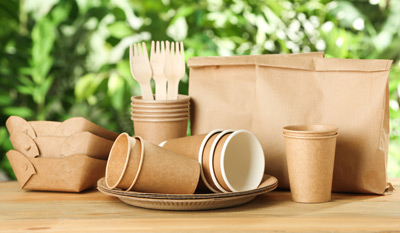SOLVENT-BASED ADHESIVES
These adhesives are applied to one or both sides of the surfaces to be bonded. The solvent usually serves two purposes. The first is to keep the contained dissolved polymer, which later creates the actual bond, processable, and the second is to prepare the surface to which the adhesive will be applied so that the dissolved polymers can bond as well as possible. Bonding can take place very rapidly, as the solvent evaporates quickly. This is why solvent adhesives have for many years been, and still are, indispensable for industrial bonding purposes as well as in the skilled trades sector. When used correctly, they are safe and can meet even the increasingly strict environmental protection regulations.
KLEIBERIT offers different versions of solvent-based adhesives: polyester-based, polyurethane-based and polychloroprene-based. They can be sprayed on or applied with a doctor blade and enable short cycle times in production.
Solvent-based polyester adhesives are already available as one-component glues that offer high initial adhesion and good temperature resistance. Their good viscosity range allows them to be applied with a doctor blade, spatula or brush. They are mainly used for gluing plastic films to PVC profiles, but also for finishing wood-based and metal profiles with films, e.g. for furniture and other general building purposes. Adding a suitable chemically reactive hardener can significantly further increase the temperature and weather resistance of the adhesive. If the respective films are then bonded to compatible PVC profiles, highly resistant window profiles that meet the RAL-GZ 716 standard can be made.
Polyurethane solvent-based adhesives are used for laminating jambs, profiles and panels, typically on wood-based materials or plastics with resin impregnated decor paper or PVC films. The adhesives are sprayed on or applied with a doctor blade. Even one-component systems provide good temperature stability.
Polyurethane solvent-based adhesives dry quickly, enabling high feeding speeds in mechanical production lines. Adding a hardener can further increase the thermal resistance, resulting in temperature stability up to 100°C.
Polychloroprene systems offer high bonding on various woods, wood-based materials, plastics, metals, mineral materials, and even leather. They are either sprayed on or applied with a doctor blade to both materials. Due to the high initial strength, the glued materials can be further processed right away.
The adhesive bond has good water, chemical, and thermal resistance. Adding a hardener can additionally and significantly increase the thermal resistance.
Industries
SOLVENT-BASED ADHESIVES
KLEIBERIT 114.5.00 Solvent adhesive
- high initial strength
- good heat and cold resistance
- surface bonding of veneers, plastic films, laminates, and inorganic coating materials on wood-based boards
KLEIBERIT 152.0.00 Solvent adhesive
- high initial strength
- low viscosity
- floor covering bonding (PVC, linoleum, carpeting) in raised floor production on carrier boards made of wood materials, concrete, gypsum, metal.
- bonding of wood and wood materials to each other, paper and materials as well as postforming in contact processes
- bonding of foams (except polystyrene foam) to each other or to fabric, wood and other solvent-resistant materials
KLEIBERIT 257.7.00 Solvent Adhesive
- rakable
- RAL GZ 716
- window profile wrapping
KLEIBERIT 261.7.00 Polyester adhesive
- can be applied with doctor blades, fast-drying
- surface lamination of plastic and paper films on wood-based materials








